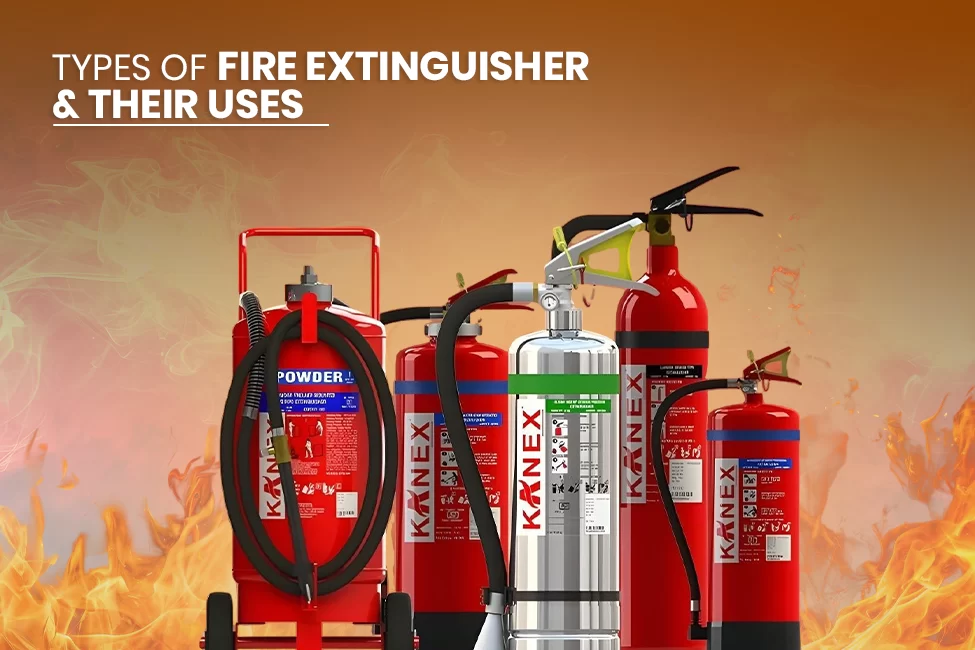Fire safety is crucial regardless of the setting, be it at the workplace, at home, or in an industrial setting. The fire can start abruptly and the damage they cause could be devastating if they are not dealt with promptly. It is important to choose the right type of fire extinguisher. It can make the difference between an incident that is minor or an ensuing fire. This blog aims to describe the type of fire extinguishers for fire currently in use along with their unique functions. This information will help you choose the most appropriate extinguisher for your requirements and prevent a flame from escalating.
Why Fire Extinguishers Are Essential
Fires can be caused by a variety of various hazards. Every type of environment, whether industrial or residential, is prone to particular fire risks. In these scenarios fire extinguishers serve as the first line of defence. Extinguishers can be a fantastic method to prevent small fires from growing. Fire safety services in Kerala stress the importance of having the correct extinguishers available as part of a comprehensive safety program.
Furthermore the building codes mandate that residential and commercial structures include fire protection equipment like fire extinguishers. Apart from placing lives and property at risk, failing to comply with the law can be punished with legal consequences.
Types of Fire Extinguishers & Their Uses
There are five kinds of fire extinguishers. They include dry powder (DCP) as well as wet chemicals. To ensure that your home is conforming to the requirements it is essential to put the right fire extinguisher in the proper place. The fire risk is determined by the kind of fuel used to create a fire in a particular location.
1. Water extinguishers Class A Fires
Extinguishers using regular water can be used to extinguish the flames that are caused by materials that ignite. They can be found in a variety of places, like storage and warehouses. The dimensions range from 6L, 9L, 45L and 60L. The water extinguishers possess cooling properties that decrease the temperature and keep the spread of fire. Extinguishers for water are white with an inscription that reads “Water”. Water extinguishers must be marked with a symbol that reads ‘Water Extinguisher.’
Uses:
Fire extinguishers made of water are common because they are considered to be ‘traditional fire extinguishers’. However the current guidelines usually recommend foam extinguishers because they are capable of extinguishing both classes A and B flames.
However, they’re beneficial for locations that have an abundance of combustible material for example, storage facilities, warehouses or paper mills. They also serve as textile factories.
Along with CO2 extinguishers, they are also effective in the home. The categories that are most likely to be associated with fire are therefore covered.
Don’t use water-based fire extinguishers to:
- Electric fires can result in electrocution
- Cooking fires, for example the chip pan (Class F-type fires)
- Inflammable gas fires, such as butane and methane (Class C-type fires)
- Incidents involving flammable liquids like paint and petrol (Class B flames)
2. Foam fire extinguishers
Foam extinguishers are also known by the name of AFFF foam extinguishers for fires are typically used to fight fires that are class A (solids) and class B (liquids). They come in 2L, 3L and 9L capacities, though 6 litres are the most commonly used.
It is possible to identify them with the use of a cream-coloured tag on the body that reads “Foam”. Additionally, an ID label is recommended to be placed in their vicinity with the words “Foam Extinguisher’.
Foam fire extinguishers function by two methods. First, they’re water-based which reduces the temperatures of fire. The second is that they put out the flames using their aqueous film which forms foam (AFFF) that smothers the flame, stopping it from sparking again. The foam can be utilized on liquids that contain flammable substances since it acts as an insulating layer between the substance and flames.
Foam fire extinguishers are great for locations that have multiple fire hazards for example, hotels, offices garages, factories and other buildings. The majority of buildings will benefit by having an extinguisher for fire.
What can foam fire extinguishers be used to do?
- The fires that involve flammable solids such as wood and paper, as well as the textile industry (Class Fires)
- Incidents that involve flammable liquids like diesel, petrol paint, and other flammable liquids (Class A fires)
Don’t use foam fire extinguishers to:
- Cooking fires made of grease and oil (Class F Fires)
- Incidents involving flammable gas (Class C-type fires)
3. CO2 fire extinguishers
CO2 extinguishers for fires (also called carbon dioxide extinguishers) are mostly used to extinguish electrical fires. They are recommended to be coupled with foam fire extinguishers.
CO2 fire extinguishers are identified with a black tag that says CO2. They feature a distinct black nozzle. They should also be identified by an ID tag that reads CO2 extinguisher..
CO2 fire extinguishers emit carbon dioxide. The gas remains in the form of a liquid, and changes into a gas once released. Since the gas is released quickly, the fire extinguishers are not recommended to be used in conjunction with fires that involve cooking oil since they could cause the fire to spread.
CO2 fire extinguishers cannot reduce fires, but they substitute oxygen with carbon dioxide, which removes the fuel. Because of this, they’re extremely effective in electrical fires. CO2 fire extinguishers can be advised for places where there is a huge number of electrical equipment, such as schools, offices and hospitals, where they must be used in conjunction with foam fire extinguishers. CO2 fire extinguishers can be found in 2kg, 4.5kg, 6.5kg, 9kg, and 22.5kg sizes.
What can CO2 fire extinguishers be employed to do?
- The fires can be caused by equipment like generators and all electrical equipment (electrical fires)
- The fires that are caused by volatile liquids, including diesel, petrol, or paint (‘class B fires)
Do not use CO2 extinguishers to:
- Incidents that are caused by grease and oil (Class F Fires).
4. MAP Extinguishers (Class A, B, C) or Dry Powder
Usage
MAP extinguishers are also known as ABC powder-type fire extinguishers These are multi-functional and can be utilized on fires involving solid substances (Class A) and liquids that are flammable (Class B) as well as gas (Class C). The powder acts by stopping the chemical reaction that is occurring in the fire.
Not Suitable for
These extinguishers are not appropriate for use in tight areas, since the powder may create breathing difficulties. In addition, the powder could make a mess and obstruct vision while fighting fires.
Wet Chemical Fire Extinguishers (Class F/K)
Usage: Wet chemical extinguishers are designed specifically for kitchen fires that contain cooking oils and fats like those used in deep fat fryers (Class F). The extinguisher releases a chemical that cools the flames. It also creates a soapy layer on top of the oil burning, which prevents ignition.
Not Suitable for: These extinguishers are not suitable for electrical fires or those with flammable liquids, such as gasoline or gas.
Conclusion
Knowing the types of fire extinguishers and their proper use is crucial to maintaining the safety of your workplace or home. A properly functioning extinguisher can stop small fires from becoming out of control. Make sure you check your property for the proper fire safety equipment and then maintain it regularly to ensure that it’s in good working order. For more information about fire security as well as compliance and other solutions, explore fire and safety services in Kerala. Take proactive steps to protect your home and property, and ensure that your home is equipped with the proper tools to respond to emergencies.

